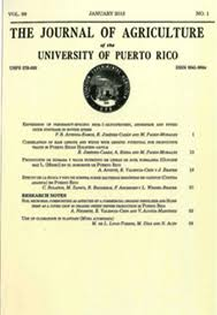Abstract
Unmanned aerial vehicles (UAVs) or drones are being studied for many agricultural applications. One application is plant phenotyping to reduce the time and effort required in collecting field data. This study aims to explore the use of a UAV, 4K-color camera and a commercial image analysis service to measure citrus plant parameters that are important to a crop scientist or grower with limited technical background and resources. Citrus spp. are important crops in Puerto Rico and the United States. Currently, the citrus industry is struggling to contain the devastating effects of citrus greening or Huanglongbing disease. The disease is associated with a phloem-limited bacteria, Candidatus Liberibacter asiaticus (CLAs), vectored by the Asian citrus psyllid (ACP), Diaphorina citri Kuwayama. The use of insecticides for vector control is the primary strategy used in nurseries and orchards. However, once the citrus plant is infected, there is no effective control available for the disease. In Puerto Rico this disease has reduced Citrus spp. yields by more than 50%; studies are underway to find effective control measures such as supplemental nutrients, vector management practices, planting disease-free vegetative material and protective screen structures. An experiment at the Fortuna Agricultural Experiment Substation, in Juana Díaz, Puerto Rico, was conducted to address the challenges posed by citrus greening. The experiment was established in a four-year-old grove of Tahiti lime (Citrus latifolia Tan.) on Cleopatra mandarin (Citrus reshni hort. ex Tanaka), naturally infected with Candidatus Liberibacter asiaticus. The experiment was arranged in a randomized complete block design with four replicates and three treatments: supplemental nutrients, supplemental nutrients + salicylic acid, and granular fertilization. Tree growth parameters were measured, and laboratory analyses were carried out to determine nutrient levels and disease severity levels from the leaf samples. The color camera, on board the UAV, was employed to acquire images of the experimental plot. Drone Deploy application was used for planning the UAV flights and image analysis. Field-measured plant height and canopy diameter compared well with the parameters determined from the color images. The average errors in measuring canopy diameter (14.5%) and plant height (22.4%) could be considered within an acceptable range, especially for comparing different treatments or crop varieties. However, the average errors in measuring canopy volume (47.5%) were high and can be considered unacceptable. It appears that the assumed conical shape of the trees could be one of the main reasons, besides the algorithms used in calculating plant volume, and built-in inaccuracies of the single frequency GPS (global positioning system) used in estimating altitude. Further studies could help in reducing errors and exploring other applications. The method used can be of importance in evaluating fruit trees.

